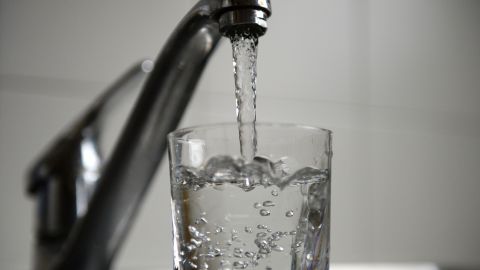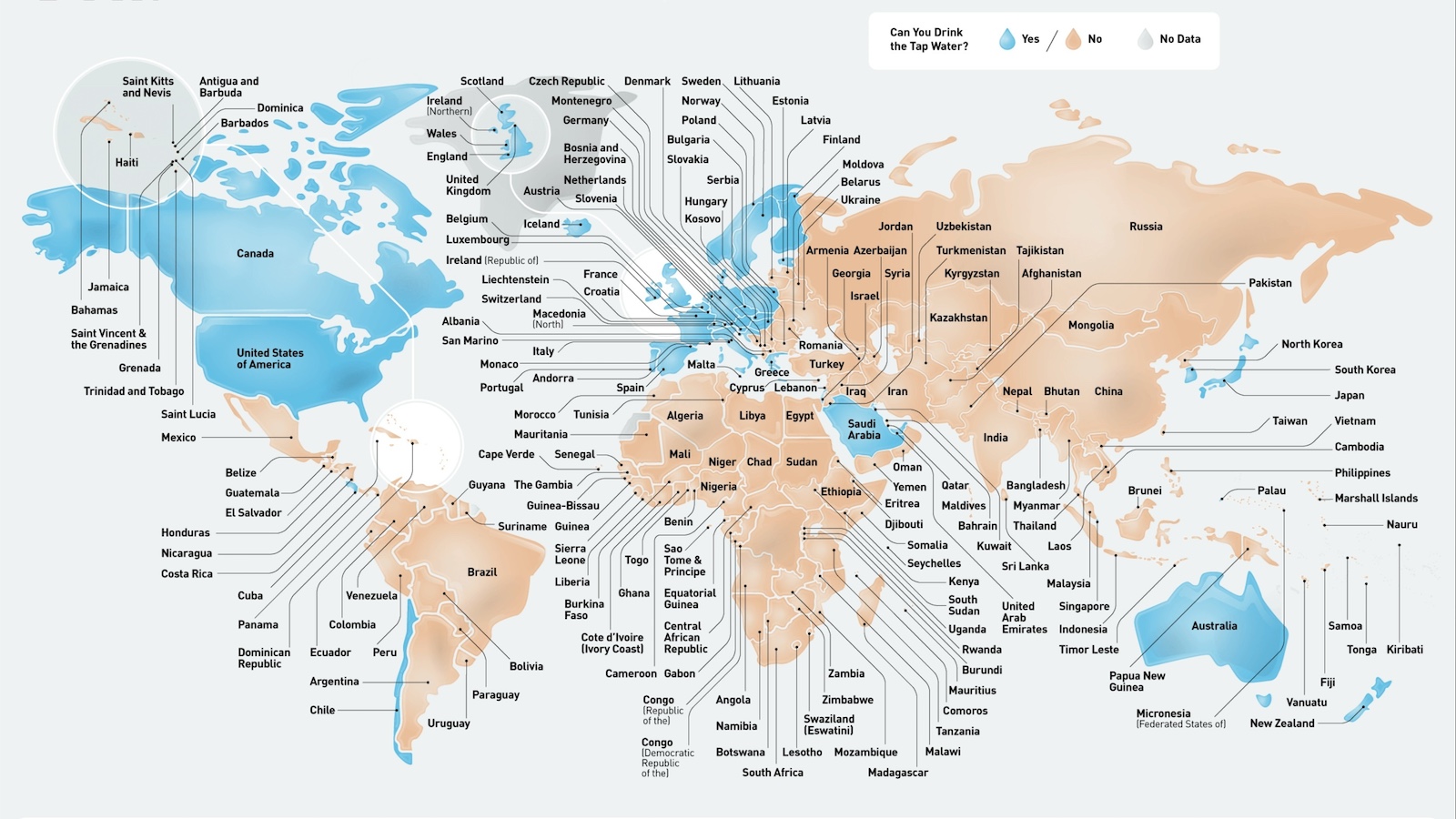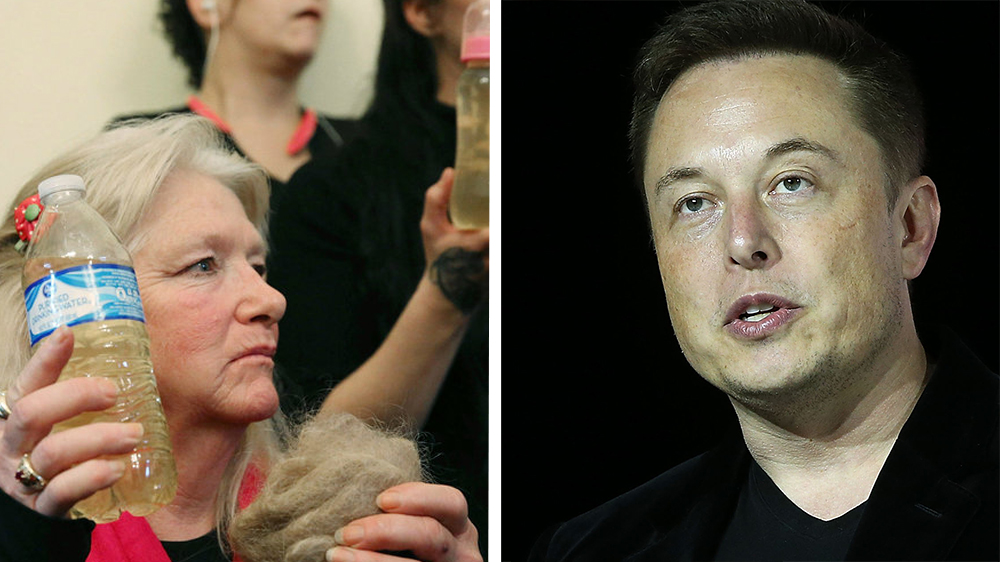How Contaminated Is Your Drinking Water? This Database Will Tell You

We have a filter in my house and almost everyone I know has one in pitcher form either in the fridge itself or one of those tenuously balanced units sitting underneath the faucet head. I admit my Sasquatch-like approach to household items has not served me well. I’ve sent several of these careening into the sink, damaged irrecoverably, before I wised up and purchased the pitcher variety.
Whatever kind you have, these units I believe are a testament to the ecological disaster wreaked upon our waterways. I remember talking with an older colleague at a nonprofit I used to work at, and him telling me that he grew up swimming, playing, and fishing in the brooks and rivers in and around Wayne, New Jersey in the 1970s. They cooked what they caught back then. Today, these brooks and such are unsafe for swimming. And Jersey anglers are all too tired of hearing, “Hook ‘em but don’t cook ‘em.”
Somehow, we are deluded into thinking that poisoning our water doesn’t affect us. It’s considered merely the cost of progress. Living in the northern part of the state, my water comes from the New Jersey Highlands Region, our tiny part of the Appalachian Mountains. Our water quality is thought to be among the nation’s finest. After all, Anheuser Busch still has a Budweiser plant down in Newark. But a new online water evaluator—EWG’s Tap Water Database, has instead offered some worrisome results.

Beer brewing is sensitive to water quality. Surely, mine must be good? Getty Images.
In my town, there have been incidents where they were working on a water main where we were told not to drink the water for 24-48 hours. However, most of the water quality reports we receive give surprisingly positive results. Even so, this new feature on The Environmental Working Group’s (EWG) website told me all kinds of disturbing things about my water that I didn’t know before. I used to drink from the tap occasionally. Not anymore.
The EWG is an environmental research and advocacy group headquartered in Washington, D.C. They recently made their database available to the public with this handy page. I typed in my zip code, selected my town’s DPW and got a full list of pollutants that I could potentially come into contact with on a daily basis. In my case, there were eight in all. Five were detected “above public health guidelines.” The other three were “other detected contaminants.” So much for award-winning water.
And how do I know their results are reliable? The website tells me that “…the New Jersey Department of Environmental Protection, as well as information from the U.S. EPA Enforcement and Compliance History database” contributed to the report. Four cancer causing agents came up, including: bromodichloromethane, dibromochloromethane, and chloroform. All of them were classified as total trihalomethanes (TTHMs).
The website alerted me that these are formed “…when chlorine or other disinfectants are used to treat drinking water.” The database went on to explain what each contaminant is, the health risks associated with it, and quarterly testing results surrounding it. With the test results, they included how much of it was in my water, the state average, and the national average. The TTHM level for my town’s water is 79.2 parts per billion (ppb). The legal limit, it tells me, is 80 ppb.

After reading your community’s report, you may never use a water fountain again. Getty Images.
As for hormones, my water contains 4-Androstene-3.17-dione. This is “…from human and animal wastewater discharged into drinking water sources.” The other three contaminants, manganese, barium, and fluoride, which didn’t have very high levels. The site isn’t all gloom and doom. It tells you what you can do to filter these things out. Apparently, my pitcher filter does just fine. No more kitchen failures with the spout variety for me.
A massive amount of work went into the database. Researchers gathered data from nearly 50,000 locations across the country. What they found was that water quality varies widely. Nneka Leiba led the project. She’s the director of the group’s healthy living program. The amount of chemicals people potentially come into contact with every time they take a sip is staggering.
You’d think that with all the media coverage, Flint, Michigan would be the country’s worst case. According to a Reuters report last year, 3,000 locations are even worse off than Flint, with higher rates of poisoning, though authorities in most cases did little about it.

Some community’s water is even worse than Flint.
40,000 water systems in the US are included in the EWG’s database. Though enormous, to put it into perspective, there are 151,000 water systems in the US total. Note that some of these only serve very small communities of a couple dozen or so people. While others of course serve hulking metropolises.
Leiba and colleagues registered a total of 256 contaminants. 81% are known carcinogens. In many places, dozens of these are at levels said to increase the risk of health problems. Though in most places, levels of known carcinogens are within federal guidelines, the EWG hopes to make the aware that they are in fact, present in their drinking water. They may be at legal levels. But according to Leiba, “Legal doesn’t mean safe.”
We usually blame corporate polluters for their effect on our water quality. To learn about how corporations can become part of the solution, click here:





